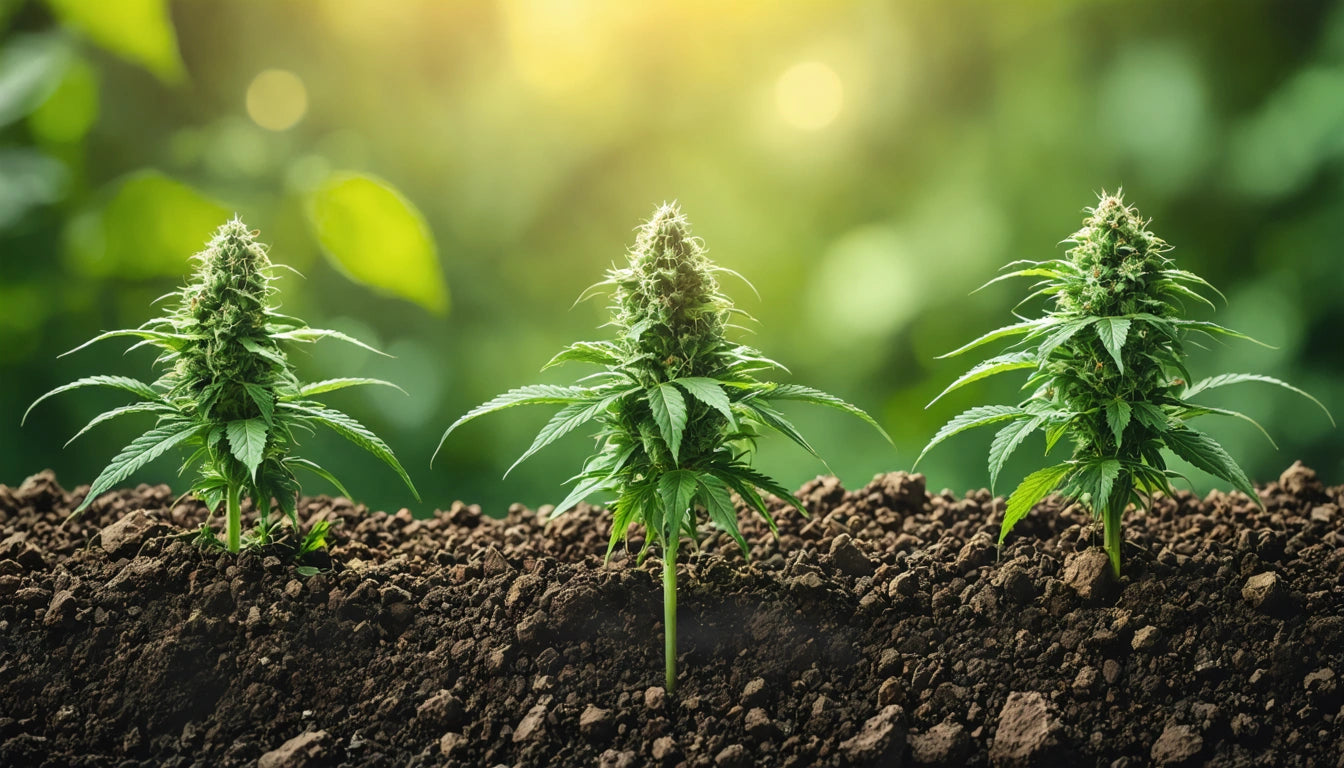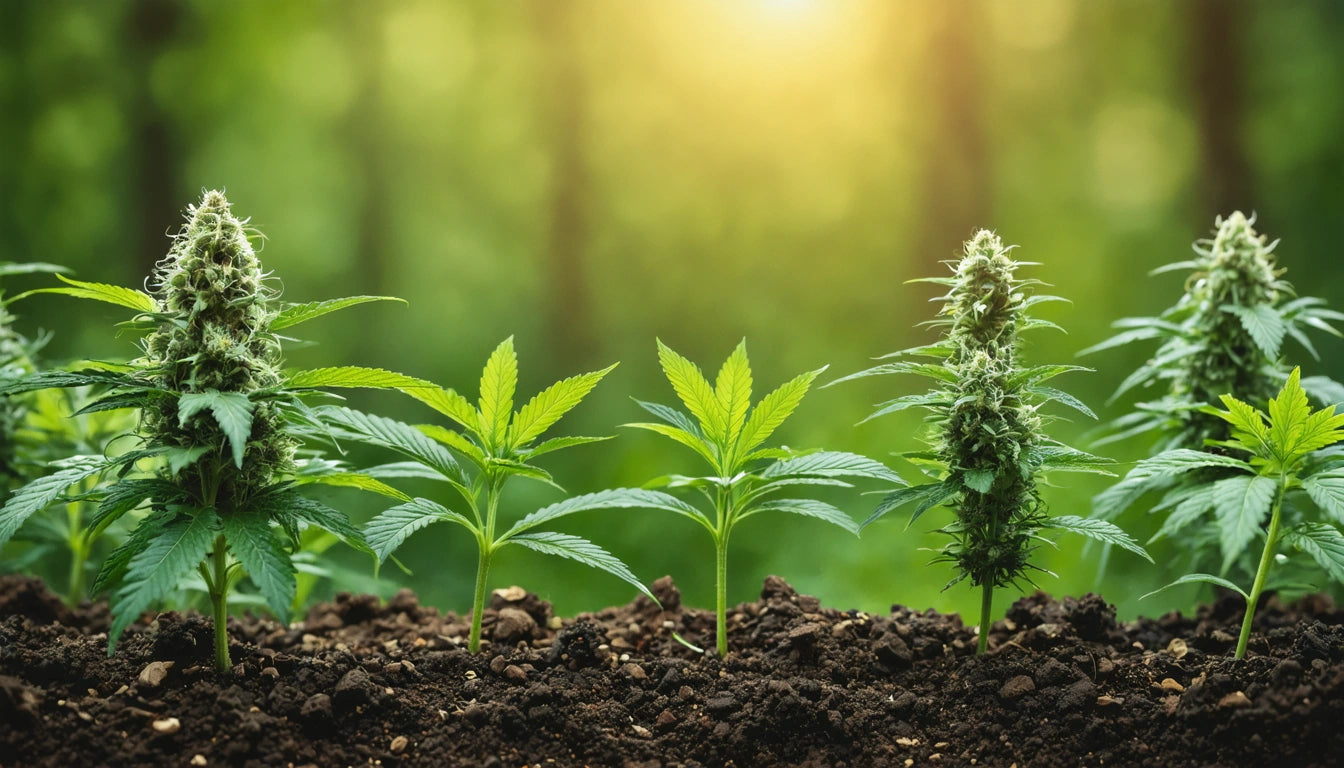Table of Contents
The Ultimate Guide to Choosing the Best Soil for Autoflowers
Selecting the best soil for autoflowers is crucial for maximizing yield and potency. Unlike photoperiod plants, autoflowering cannabis has a predetermined life cycle and limited time to recover from stress, making the growing medium selection particularly important. This guide explores everything from commercial options to DIY mixes that will help your autoflowers thrive.
Understanding Autoflower Soil Needs
Autoflowering cannabis varieties have specific soil requirements that differ from their photoperiod counterparts. These plants develop rapidly, typically completing their life cycle in 8-10 weeks from seed. This accelerated growth pattern means they need readily available nutrients and optimal growing conditions from day one.
The ideal soil for autoflowers provides:
- Excellent drainage to prevent root rot
- Sufficient water retention to maintain consistent moisture
- Light, airy texture that allows roots to expand easily
- Balanced nutrient profile suitable for all growth stages
- pH level between 6.0 and 7.0 for optimal nutrient uptake
Understanding these fundamentals helps growers select or create the best soil mix for autoflowers, ensuring healthy development from germination through harvest.
Components of Quality Autoflower Soil
Base Materials
The foundation of the best soil for autoflowering cannabis typically includes:
- Peat moss or coco coir for water retention and aeration
- Perlite or pumice to improve drainage and prevent compaction
- Vermiculite to help retain nutrients and moisture
- Compost or worm castings to provide organic nutrients
These components create the physical structure needed for healthy root development. According to research on optimizing autoflower growth, the ratio of these materials significantly impacts plant development and final yields.
Nutrient Content
Autoflowers perform best with a lighter nutrient profile than photoperiod plants, especially during early growth. The best soil mix for autoflowers often includes:
- Slow-release organic nutrients
- Mycorrhizal fungi to enhance nutrient uptake
- Beneficial bacteria for root health
- Humic acids to improve nutrient availability
Highlight: When storing soil and growing supplies, always use containers with secure, child-resistant lids to keep these materials safely away from children and pets while maintaining freshness.
Best Store-Bought Soils for Autoflowers
For growers seeking convenience, several commercial options stand out as the best store bought soil for autoflowers:
- Fox Farm Ocean Forest: Pre-fertilized with a slightly higher nutrient content, ideal for the entire growth cycle
- Biobizz Light Mix: Perfect for growers who prefer to control their feeding schedule
- Roots Organic Original: Well-balanced for autoflowers with beneficial mycorrhizae
- Pro-Mix HP: High porosity mix that provides excellent drainage and aeration
- Happy Frog by Fox Farm: Lighter nutrient profile suitable for sensitive autoflower strains
These ready-to-use options provide reliable results for both beginners and experienced growers. Many successful cultivators use these as a base and amend them slightly to create their ideal growing medium.
Creating Custom Soil Mixes
Creating a custom mix often yields the best soil for autoflower plants tailored to your specific growing environment. A popular DIY recipe includes:
- 40% high-quality potting soil
- 30% coco coir
- 20% perlite
- 10% worm castings
Additional amendments might include:
- Bat guano for phosphorus
- Kelp meal for micronutrients
- Dolomite lime to buffer pH
- Bone meal for calcium and phosphorus
Custom mixes allow growers to adjust components based on specific strain needs and growing conditions. As noted in this guide on maximizing autoflower yields, soil customization can significantly impact final harvest results.
Indoor vs. Outdoor Soil Considerations
The best soil for autoflowers indoors may differ from outdoor applications due to environmental factors:
Indoor Considerations
Indoor growers typically need:
- Lighter soil mixes that dry more predictably
- Higher perlite content (up to 30%) for improved drainage
- Pre-buffered coco coir to prevent calcium and magnesium deficiencies
- Carefully controlled nutrient levels to prevent lockout in contained environments
Outdoor Considerations
Outdoor autoflower soil benefits from:
- Higher water retention capacity to handle weather fluctuations
- More organic matter to support beneficial soil life
- Mulch layers to protect soil biology and maintain moisture
- Amendments that support resistance to environmental stressors
Understanding these differences helps create optimized growing conditions regardless of environment. Comprehensive growing guides suggest adapting soil composition based on your specific growing location.
Living Soil for Autoflowers
Living soil represents perhaps the best soil for autoflowers for organic growers. This approach creates a self-sustaining ecosystem that:
- Reduces the need for additional fertilizers
- Improves terpene and cannabinoid profiles
- Enhances disease resistance
- Creates renewable growing medium that improves over time
The best living soil for autoflowers typically includes:
- Base of high-quality compost
- Diverse organic amendments (alfalfa, kelp, neem cake)
- Mineral sources (rock dust, gypsum)
- Cover crop seeds to maintain soil biology between grows
This approach requires more initial setup but offers exceptional results for quality-focused growers. According to experienced cultivators, living soil often produces the most flavorful and potent autoflower harvests.
Optimizing Soil Conditions for Maximum Yields
Beyond selecting the best soil for autoflowering cannabis, several practices help optimize growing conditions:
- Pre-moisten and allow soil to settle before planting
- Use appropriate pot sizes (3-5 gallons ideal for most autoflowers)
- Monitor and maintain proper pH (6.0-6.5 is optimal)
- Implement proper watering techniques (allow top inch to dry between waterings)
- Consider supplemental nutrient solutions during flowering
These practices, combined with selecting high-yielding autoflower genetics, create the perfect environment for successful cultivation. Remember that autoflowers have limited time to recover from stress, so creating optimal soil conditions from the start is essential for maximizing your harvest potential.
By understanding the specific needs of autoflowering cannabis and selecting or creating the appropriate soil mix, growers can significantly improve their results while minimizing common problems. Whether you choose premium store-bought options or craft your own custom blend, the right soil forms the foundation for autoflower success.











Leave a comment
All comments are moderated before being published.
This site is protected by hCaptcha and the hCaptcha Privacy Policy and Terms of Service apply.